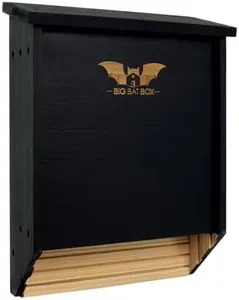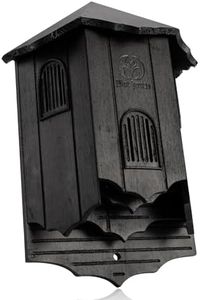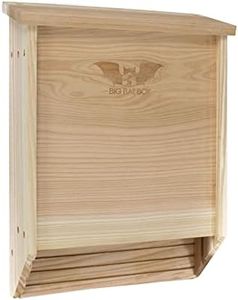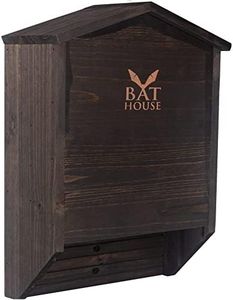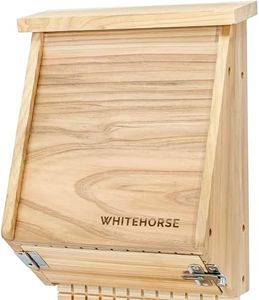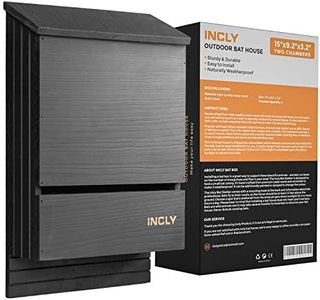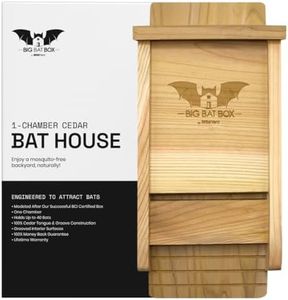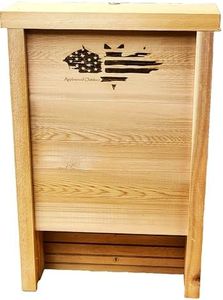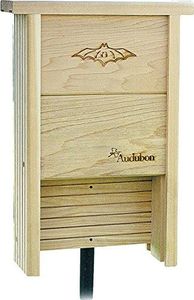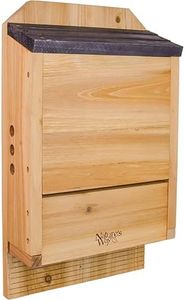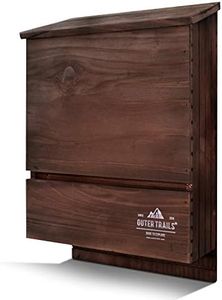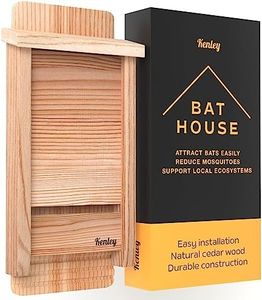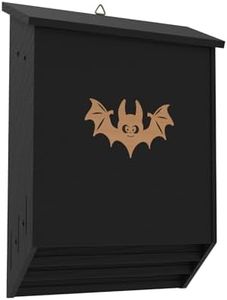We Use CookiesWe use cookies to enhance the security, performance,
functionality and for analytical and promotional activities. By continuing to browse this site you
are agreeing to our privacy policy
10 Best Bat Houses
From leading brands and best sellers available on the web.Buying Guide for the Best Bat Houses
Choosing the right bat house can make a significant difference in attracting bats to your area, which helps with insect control and supports local ecosystems. When selecting a bat house, you should consider a few key features that impact how comfortable and safe the house will be for bats. Understanding these aspects ensures you pick one that is well-suited to your local environment and the needs of the bats you hope to attract.Chamber CountChamber count refers to the number of separate spaces inside the bat house where bats can roost. More chambers generally mean more room, which can attract larger colonies and give bats better options for temperature regulation. Single-chamber houses are smaller and simpler, making them easier to mount but they may only attract a few bats. Multi-chamber houses can accommodate more bats and provide better insulation, making them ideal if you want to host a large group or live in an area with varied temperatures. Choose a single-chamber if you have limited space or are just getting started, and consider multi-chamber if you want the highest chance of success and have room to mount a larger house.
Material and Construction QualityThe materials and build quality of a bat house affect how long it will last and how well it protects bats from the elements. Common materials include untreated wood like cedar, which is durable and naturally weather-resistant. Houses should be sturdy, with tightly sealed seams and rough interior surfaces to help bats climb. Poorly built houses may fall apart quickly or let in rain and drafts. Look for solid construction, quality materials, and a house that is not made of plastic or flimsy wood. Prioritize houses with a roughened interior and avoid anything with a glossy or smooth finish, as bats need to grip onto the walls.
VentilationVentilation refers to small gaps or slots that allow air to flow through the bat house. Proper ventilation helps keep the temperature inside comfortable, especially in hot climates where overheating can be dangerous for bats. Too much ventilation, however, can make the house too cold in cooler areas. Houses for warm climates should have more or longer vents, while those for cooler regions need smaller or limited vents. Pick a house with ventilation that suits your local weather: more airflow for hot, sunny regions and less for cooler, shady locations.
Color and FinishBat houses are often painted or stained on the outside to help control internal temperature. Darker colors absorb more heat, which is helpful in cooler climates, while lighter colors reflect heat and are better for warmer areas. The finish should be non-toxic and only applied to the exterior; the interior should remain unfinished and rough. Choose a dark house for places with cool weather and more sun exposure, a medium-toned one for temperate climates, and a light one for hot, sunny locations to ensure the house doesn't overheat.
Mounting Options and Location GuidanceHow and where you can mount your bat house affects its effectiveness. Some are designed to be attached to buildings, while others can be mounted on poles or trees. Most bats prefer houses mounted on poles or buildings rather than trees, as these locations are safer from predators and offer better sunlight exposure. Consider the mounting hardware included with the house and instructions for installation. Think about where you can safely and securely mount your house at least 10-15 feet above the ground, away from bright lights, and with several hours of direct sunlight.
